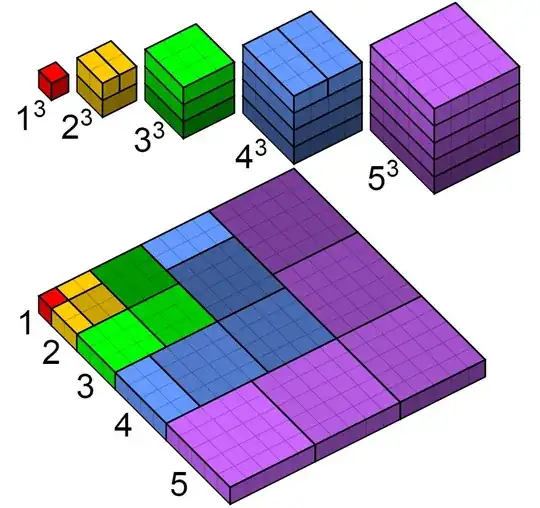It is well know that $$\left(\sum_{r=1}^n r\right)^2=\sum_{r=1}^n r^3$$ i.e. $$(1+2+3+\cdots+n)(1+2+3+\cdots+n)=1^3+2^3+3^3+\cdots+n^3$$ and this is usually proven by showing that the closed form for the sum of cubes is $\frac 14 n^2(n+1)^2$ which can be written as $\left(\frac 12 n(n+1)\right)^2$, and then noticing that $\frac 12 n(n+1)$ is the sum of integers.
Is it possible to prove the result, preferably from LHS to RHS, without first expanding the summation to closed form, as described above?
Note: The intention is to arrive at RHS from LHS by manipulation of limits and summands without full expansion to closed form, rather than using induction, or graphical methods, like Nicomachus' method.
